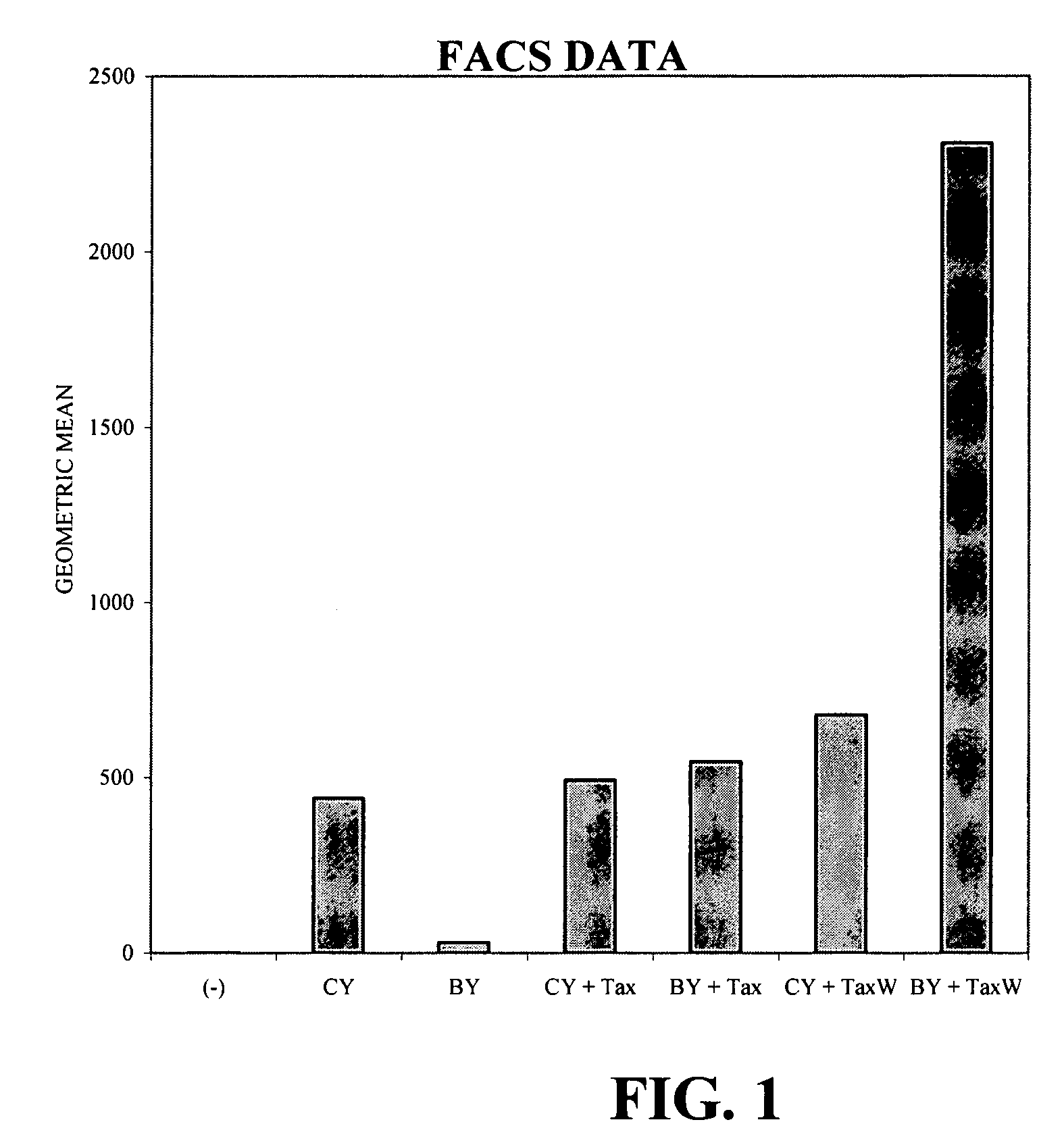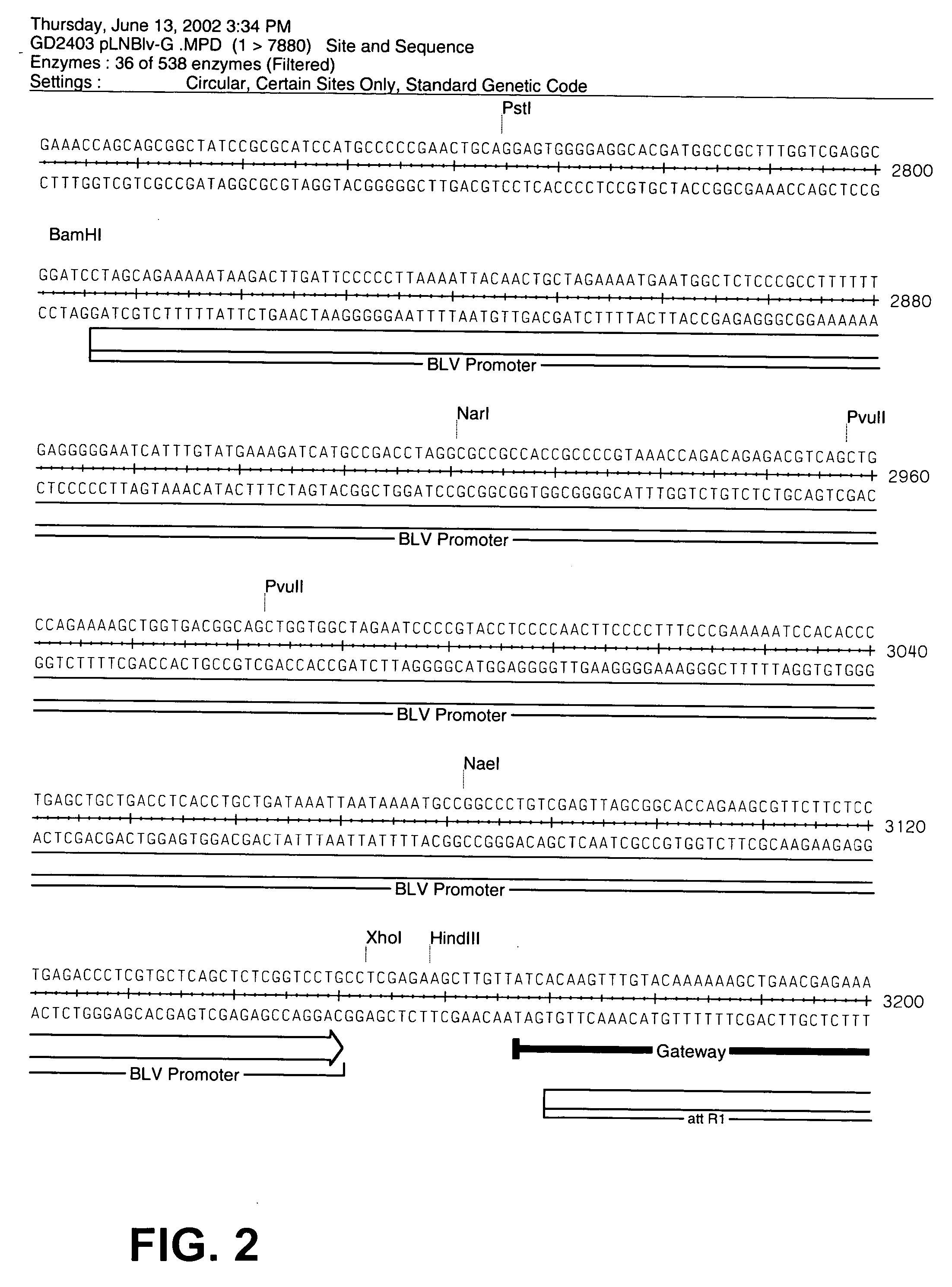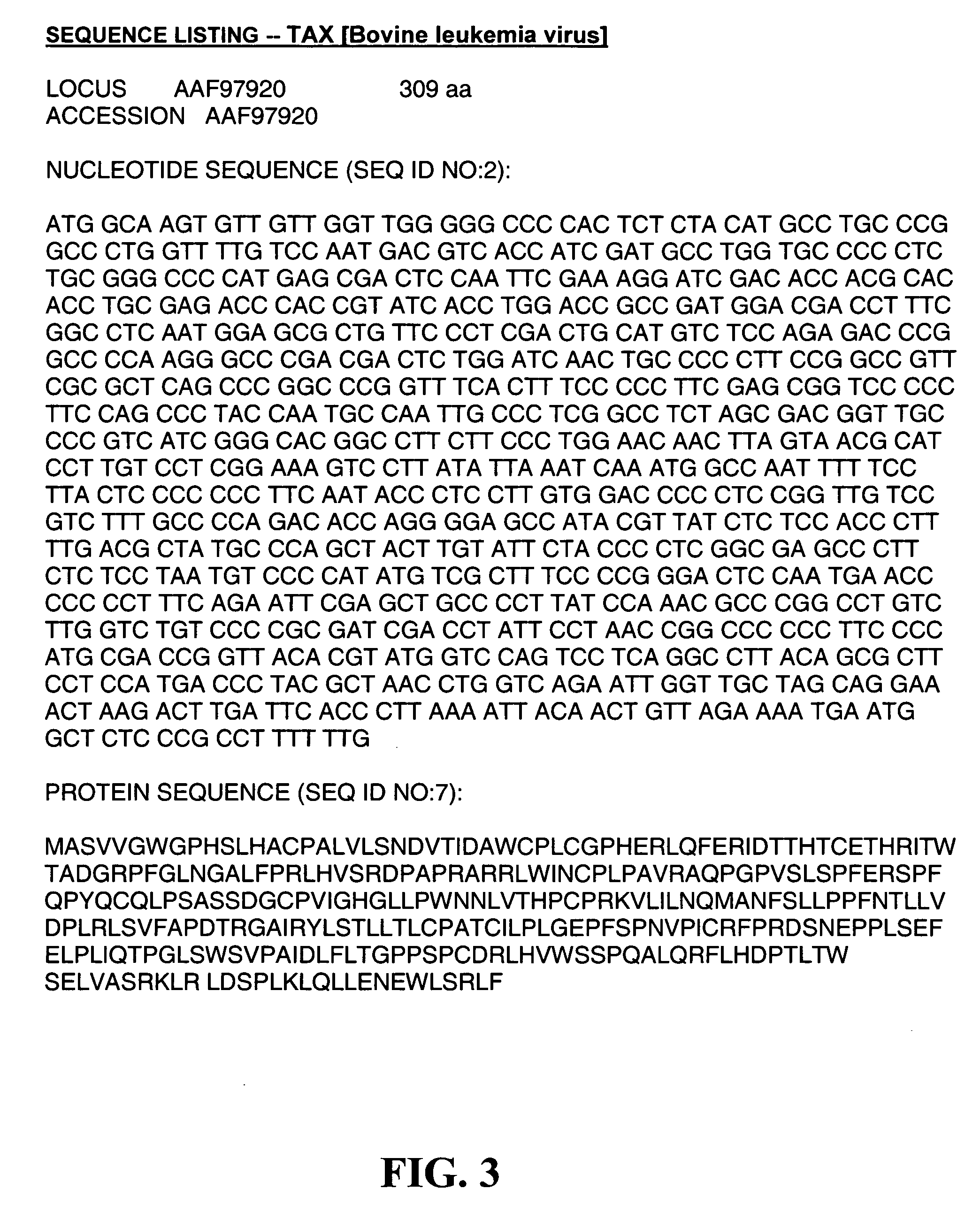Inducible protein expression system
a protein and expression system technology, applied in the field of gene expression, can solve the problems of inability to maintain commercially useful levels of constitutive expression in the recombinant cell population, the presence of abundant foreign proteins is toxic to the host cell, and the continued expression of foreign genes
- Summary
- Abstract
- Description
- Claims
- Application Information
AI Technical Summary
Problems solved by technology
Method used
Image
Examples
example 1
[0095] Tax Inducible Gene Expression
[0096] Two different promoter constructs were analyzed in this example. Table 1 shows the constructs utilized in the experiments below and the geometric mean brightness values from FACS analysis. The BLV promoter was compared to the immediate early promoter of cytomegalovirus (CMV), a known strong promoter for mammalian expression systems. Two reporter constructs were used, LNBIv-YFP (SEQ ID NO:13), which contains the gene for yellow fluorescent protein (YFP) under the control of the BLV promoter, and LNC-YFP, which contains the gene for YFP under the control of the CMV promoter. The reporter constructs utilize the Neo selectable marker. Two inducer constructs were used, LBC-BTax (SEQ ID NO:10), which contains the gene for BLV Tax under control of the CMV promoter, and LBC-BTaxW, which is the same as LBC-BTax, with the addition of the WPRE in the 3′ UTR of the BTax gene. The addition of the WPRE sequence to the Tax message is contemplated to incr...
example 2
[0100] Comparison of BLV and CMV Promoter-Driven Reporter Gene Expression in BLV-Infected and Non-Infected Cells
[0101] A commercially available retroviral system was used with its standard CMV promoter (CMVp) or replaced with the BLV promoter (BLVp). FIG. 17 shows a schematic of the BLV promoter used in this experiment with its unique regulatory elements. The luciferase reporter gene was used to compare promoter expression strength within different cell lines and treatments. The WPRE was also incorporated to enhance transgene expression within these retroviral vectors. WPRE has been reported to significantly stimulate expression of transgenes in a promoter-independent fashion. Retroviral vectors were used because of the ease of stable cell line establishment, and because of its prominent use in transgenics and gene therapy. Cells of several different tissues and species were used in our studies and are listed in Table 3.
TABLE 3Cells Used in Promoter Comparison StudiesNameDescript...
example 3
[0104] BLV Infection Enhances BLV Promoter Expression but Has No Measurable Effect on the CMV Promoter
[0105] BLV promoter activity was greater than CMV promoter activity in the BLV infected FLK cell line but minimal compared to CMV promoter activity in the non-BLV infected D17 cell line. A determination was made as to whether BLV infection of D17 cells would enhance BLVp and / or suppress CMVp expression. The dog derived D17 cell line can be infected with BLV albeit not very efficiently (Boris-Lawrie et al., J. Virol. 71:1514 [1997]). D17 cells were infected with concentrated BLV from FLK cells, then clonally selected for BLV expression using pol RT-PCR and BLV reverse transcriptase assay of the supernatant. Luciferase assays demonstrated that BLV promoter activity in infected D17 cells was about 10-fold greater than BLV promoter activity in non-infected D17 cells (FIG. 19). CMV promoter activity remained unchanged.
[0106] The CMV promoter activity was still about 5-fold greater than...
PUM
| Property | Measurement | Unit |
|---|---|---|
| Nucleic acid sequence | aaaaa | aaaaa |
| Gene expression profile | aaaaa | aaaaa |
| Processing properties | aaaaa | aaaaa |
Abstract
Description
Claims
Application Information
 Login to View More
Login to View More - R&D
- Intellectual Property
- Life Sciences
- Materials
- Tech Scout
- Unparalleled Data Quality
- Higher Quality Content
- 60% Fewer Hallucinations
Browse by: Latest US Patents, China's latest patents, Technical Efficacy Thesaurus, Application Domain, Technology Topic, Popular Technical Reports.
© 2025 PatSnap. All rights reserved.Legal|Privacy policy|Modern Slavery Act Transparency Statement|Sitemap|About US| Contact US: help@patsnap.com



